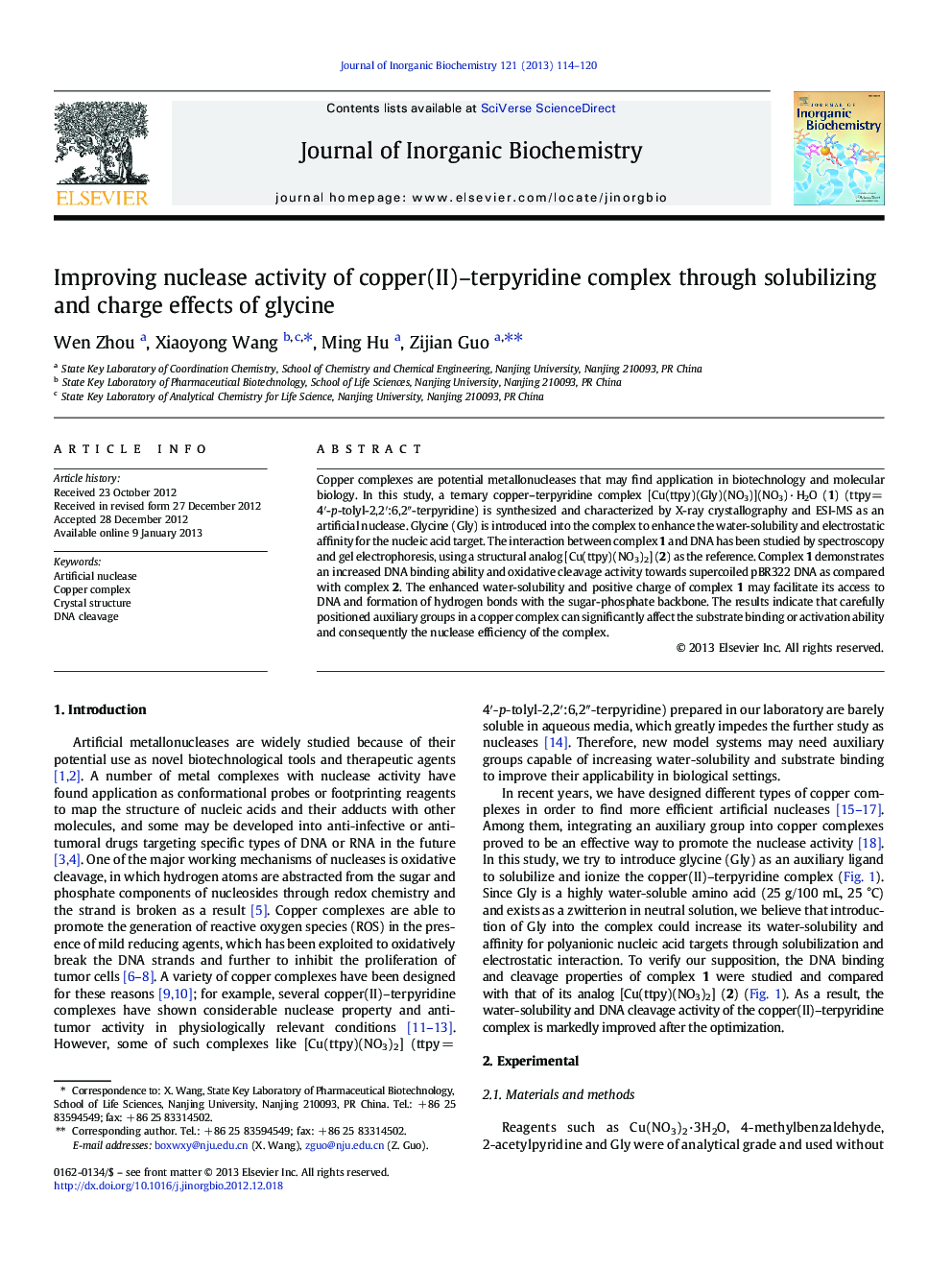| Article ID | Journal | Published Year | Pages | File Type |
|---|---|---|---|---|
| 1316050 | Journal of Inorganic Biochemistry | 2013 | 7 Pages |
Copper complexes are potential metallonucleases that may find application in biotechnology and molecular biology. In this study, a ternary copper–terpyridine complex [Cu(ttpy)(Gly)(NO3)](NO3) · H2O (1) (ttpy = 4′-p-tolyl-2,2′:6,2″-terpyridine) is synthesized and characterized by X-ray crystallography and ESI-MS as an artificial nuclease. Glycine (Gly) is introduced into the complex to enhance the water-solubility and electrostatic affinity for the nucleic acid target. The interaction between complex 1 and DNA has been studied by spectroscopy and gel electrophoresis, using a structural analog [Cu(ttpy)(NO3)2] (2) as the reference. Complex 1 demonstrates an increased DNA binding ability and oxidative cleavage activity towards supercoiled pBR322 DNA as compared with complex 2. The enhanced water-solubility and positive charge of complex 1 may facilitate its access to DNA and formation of hydrogen bonds with the sugar-phosphate backbone. The results indicate that carefully positioned auxiliary groups in a copper complex can significantly affect the substrate binding or activation ability and consequently the nuclease efficiency of the complex.
Graphical abstractA ternary copper–terpyridine complex with auxiliary glycine ligand demonstrates enhanced DNA binding and cleavage properties due to the increased water-solubility and electrostatic interaction.Figure optionsDownload full-size imageDownload as PowerPoint slideHighlights► Cu-terpyridine-Gly ternary complex was prepared as an artificial nuclease. ► Gly increased the water-solubility and electrostatic affinity of the complex for DNA. ► Cu-terpyridine-Gly complex showed enhanced abilities in DNA binding and cleavage.
